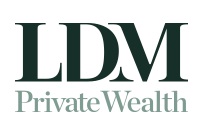Business expansion through asset acquisition is a tricky process, which is why the development of a robust asset acquisition strategy is important for all those considering this path to growth.
In business terms, an asset is defined as a resource that is owned or controlled by an economic entity and can be expected to produce value or benefit in the future.
An asset has two value adding components: it can be used to produce value, and it can be exchanged for cash (or in economic terms, liquidated).
One of the key metrics that a business is measured against is the value of its assets and determining this comes down to understanding what its depreciated value is, and how easily it can be liquidated.
For anyone seeking to buy a business or whom may be in the process of setting up a new business, understanding assets and how they impact your taxes is critical, especially as you approach end of financial year processing tasks.
Understanding different types of assets
Prior to diving into what business owners should be considering when purchasing assets, it’s important to have a clear understanding of the different types of assets that tend to sit on a business’s balance sheet.
Business assets are generally divided into two categories: ‘tangible’ assets, and ‘intangible’ assets.
Tangible assets
This type of asset is defined as a resource that has finite monetary value and normally takes a physical form.
Tangible assets can be further broken down into two sub-classes: “current” and “fixed” assets.
Current assets refer to tangible assets that can be exchanged or liquidated quickly and are unlikely to fluctuate in value. Examples include: cash at bank, inventory, accounts receivable, and prepared expenses.
If the need to liquidate any of the tangible assets would arise, doing so would cause little-to-no disruption to operational activities.
Fixed assets, on the other hand, include resources such as land, property, and equipment. These assets are long-term investments which are likely to change in value over time, and their liquidation can be a complex and involved process.
Intangible assets
This asset type includes non-physical resources that only have a theoretical value which is generated by the subjective valuation of the business itself. Examples include copyrights, trademarks, brand value, good will, licenses, and patents.
These assets are quite unique in the sense that while they do hold their own inherent value, this value generally can’t be liquidated in the open market. For an intangible asset to be sold, it typically needs to be done privately with elaborate negotiation.
On the balance sheet, intangible assets are normally listed together with fixed assets – as the complexities surrounding the liquidation of both asset classes are similar.
The benefits of acquiring business assets
One of the most popular business expansion strategies is the acquisition of other businesses that own assets that can be used for the purpose of growth.
These assets can be tangible, intangible, current or fixed – and the idea is that purchasing them can allow for the acquiring business to expand quickly without having to source or develop these assets themselves.
Acquiring business assets can be quite a complex process. The valuation process, the transfer process, the accounting and tax implications are all nuanced and require a certain level of insight in order to get right.
This being the case, it’s important to develop an asset acquisition strategy before going down the road of purchasing business assets – especially when buying them from a business owner who is looking to offload them quickly while trying to get the best bang for their buck.
What is an asset acquisition strategy?
An asset acquisition strategy is the strategic activity undertaken to grow a business through the purchase of another organisation, business unit or assets.
As a result, asset acquisition strategies are considered an inorganic path to achieving growth through external means, rather than organic growth fostered within the business.
Robust asset acquisition strategies are comprised of four key components:
Awareness of the tax ramifications of acquiring assets
First and foremost, spending money on purchasing assets is considered capital expenditure (also known as ‘cap-ex’) which operates differently to regular operational expenditure (also known as ‘op-ex’) from an accounting and tax standpoint.
The key difference between the two categories is that capital expenditure is generally not put on the company’s Profit & Loss statement and expensed in full but is rather listed on the Balance Sheet and depreciated over time. This in turn can have a strong impact the business’s tax position – so it’s important to be aware of this.
Additionally, it’s important to be aware of the tax incentives that may be available to business that purchase assets, a leading incentive being the Instant Asset Write Off.
A well-informed purchasing strategy
Most businesses don’t have the capital funds on hand to purchase another business’s assets, so they opt to raise funds through debt or equity financing.
While this choice is common and certainly popular, it is unlikely to be worthwhile if the acquiring business overpays for the assets. When this occurs, the value derived from the assets can end up being less than the cost associated with purchasing them – so it is of great importance to ensure that the price is right.
Knowledge of the non-financial side of the picture
Moreover, there are other non-financial components of purchasing another business’s assets that need to be considered.
For instance, are there enough resources internally for the business to handle rapid expansion once the assets are purchased? Is there adequate synergy between the businesses involved in this acquisition?
Answering these questions prior to acquiring these assets will ensure that the purchaser is well-informed and ready to go through the acquisition process.
Includes the right advice
As with most complex business issues, developing a foolproof asset acquisition strategy requires the guidance of experts.
On the accounting side, the acquirer should seek to engage the assistance of accounting professionals who can provide advice throughout the entire process, including the valuation, transfer, and financial maintenance of the acquisition (including tasks such as bookkeeping, depreciation, and so on.)
It’s also important to remember that there are many legal components to purchasing assets, including the review of contracts, terms, conditions, and so on, making it important to retain the advice of a legal professional to help navigate the complexities of the entire process.
All told, business expansion through the acquisition of business assets is an exciting prospect, but one which needs to be treated with great care and caution.
Without a solid strategy, the acquiring business could end up far worse off than they may have otherwise been.
Conversely, a robust asset acquisition strategy can enable a growing business to realise and capitalise on its potential in large and lucrative markets.
The information provided here is of a general nature for Australia and should not be your only source of information. Please consult us on (02) 8277 4605 as each small business’ circumstances will vary for end of financial year.
Source: MYOB May 2022
Reproduced with the permission of MYOB. This article by Benjamin Kluwgant was originally published at https://www.myob.com/au/blog/asset-acquisition/
Important:
This provides general information and hasn’t taken your circumstances into account. It’s important to consider your particular circumstances before deciding what’s right for you. Although the information is from sources considered reliable, we do not guarantee that it is accurate or complete. You should not rely upon it and should seek qualified advice before making any investment decision. Except where liability under any statute cannot be excluded, we do not accept any liability (whether under contract, tort or otherwise) for any resulting loss or damage of the reader or any other person.
Any information provided by the author detailed above is separate and external to our business and our Licensee. Neither our business nor our Licensee takes any responsibility for any action or any service provided by the author. Any links have been provided with permission for information purposes only and will take you to external websites, which are not connected to our company in any way. Note: Our company does not endorse and is not responsible for the accuracy of the contents/information contained within the linked site(s) accessible from this page.



